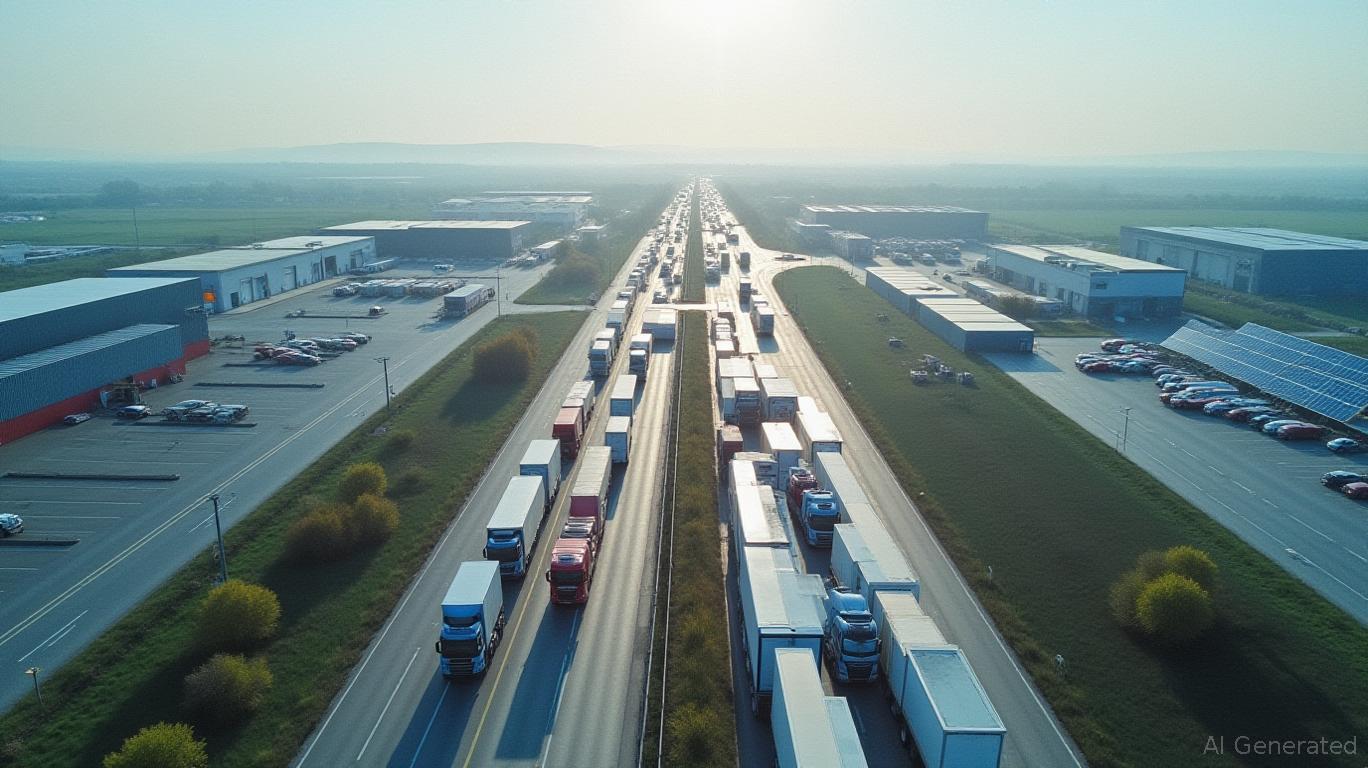The Border Divide: Navigating Geopolitical Risks and Opportunities in Poland-Germany Cross-Border Infrastructure
The resurgence of border controls between Poland and Germany since 2023 has reshaped the geopolitical and economic landscape of Central Europe. While these measures aim to address migration and security concerns, they have introduced new risks and opportunities for investors in logistics and real estate. This article examines how geopolitical tensions are influencing cross-border infrastructure investments and identifies strategies to capitalize on resilient growth sectors.

Geopolitical Tensions and Trade Realities
The temporary reintroduction of border checks under Schengen rules has created friction between Poland and Germany. While Germany cites "public order threats" to justify its actions, courts have ruled its blanket rejections of asylum seekers violate EU law. These legal disputes underscore the fragility of cross-border cooperation, which has already disrupted trade flows.
Data shows German exports to Poland remain stable (€101.44 billion in 2024), while Polish exports to Germany dipped by 2.2% in Q1 2025. However, the true impact lies in logistics bottlenecks: delays at border crossings like Zgorzelec-Görlitz now add 1–3 hours to transit times, raising costs for Eastern European carriers by up to 15%.
Logistics: From Vulnerability to Resilience
The border controls have exposed vulnerabilities in just-in-time supply chains but also highlighted opportunities for investors in resilient infrastructure. Key trends include:
- Diversification of Routes:
- Companies like Panattoni and Prologis are expanding warehouses in Poland's border regions (e.g., Tricity and Poznań), enabling "buffer stock" storage to mitigate delays.
Rail freight is gaining traction: the Berlin-Poznań-Warsaw corridor now handles 40% more cargo than in 2020, leveraging EU-funded intermodal terminals.
Tech-Driven Efficiency:
- Digital platforms like GetTransport.com are reducing administrative friction by automating customs documentation.
- AI-powered routing systems now cut delivery times by optimizing paths around congested borders.
Investments in logistics hubs near borders surged from €1.5 billion in 2020 to €2.02 billion in Q1 2025, driven by Western European investors seeking yield in stable markets.
Real Estate: The Border Advantage
Despite geopolitical noise, Poland's border regions remain attractive due to their strategic location and EU funding.
- Industrial Parks:
- Cold storage facilities in Warsaw and Poznań command 5–7% annual rental growth, as e-commerce and food logistics expand.
Panattoni Park Tricity East V (purchased by Fortress REIT) exemplifies demand for high-tech warehouses near sea ports.
Data Centers:
- Poland's central location and energy resilience make it a hub for EU data sovereignty projects. Investors like Equinix are building Tier IV-certified facilities near German borders to serve Frankfurt's financial markets.
Risks and Mitigation Strategies
The primary risks stem from legal uncertainty and escalating tensions:
- A sustained breakdown of the Dublin Regulation could lead to permanent border controls, raising compliance costs.
- Geopolitical shocks, such as a Russian-backed "hybrid war" narrative, could disrupt cross-border projects.
Investors should prioritize:
1. Diversification: Allocate capital to logistics assets with access to multiple routes (road, rail, and maritime).
2. ESG Compliance: Focus on net-zero warehouses and solar-powered facilities to secure EU subsidies and institutional capital.
3. Local Partnerships: Engage with developers like PKP Cargo to navigate bureaucratic hurdles and access rail networks.
Conclusion: A New Paradigm for Cross-Border Infrastructure
While Poland-Germany border controls pose near-term risks, they have also accelerated innovation in logistics and real estate. Investors who bet on resilient infrastructure—whether in border warehouses, rail corridors, or tech-enabled hubs—are likely to outperform. The EU's Connecting Europe Facility (CEF) provides a safety net, with €2.8 billion allocated to cross-border projects through 2027.
For now, the border divide is a test of adaptability. Those who invest in solutions to geopolitical friction will reap rewards in a post-Schengen reality.
Investors should monitor these trends closely: the next phase of European integration may hinge on how well we bridge divides—with infrastructure.

Comments
No comments yet